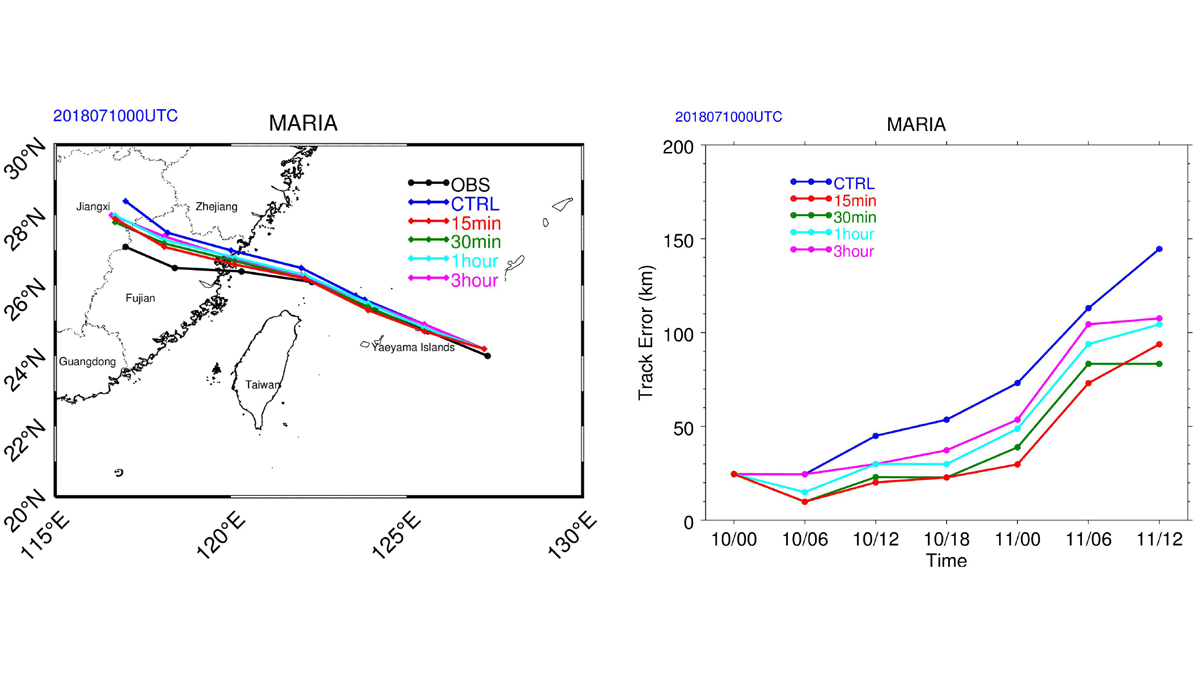Editors’ Highlights are summaries of recent papers by AGU’s journal editors.
Source: Geophysical Research Letters
The Geostationary Interferometric Infrared Sounder (GIIRS) is a space-borne instrument making fast and accurate measurements of temperature and humidity, which can portray atmospheric structure in three-dimensions. Yin et al. [2021] use data from GIIRS at 15-minute temporal resolution and, for the first time, show the impact of assimilating target high-resolution temporal observations in typhoon track forecasts. The authors show significant improvement in the track and intensity (sea level pressure) forecasts as the temporal resolution of the data assimilated is increased. They also show that the precipitation forecasts improve during landfall by assimilating the same high-resolution data. These improvements are connected with the improvement in simulation of the details of structure of the typhoon, in particular temperature, leading to better initial fields for the forecasts.
Citation: Yin, R., Han, W., Gao, Z., & Li, J. [2021]. Impact of high temporal resolution FY-4A Geostationary Interferometric Infrared Sounder (GIIRS) radiance measurements on Typhoon forecasts: Maria (2018) case with GRAPES global 4D-Var assimilation system. Geophysical Research Letters, 48, e2021GL093672. https://doi.org/10.1029/2021GL093672
―Suzana Camargo, Editor, Geophysical Research Letters

